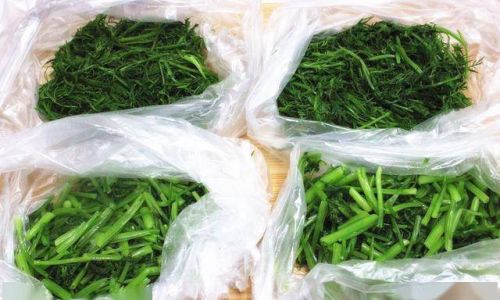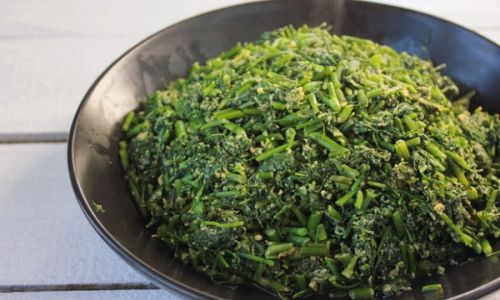Introduction

Fresh fennel, with its licorice-like aroma and crisp texture, is a versatile ingredient in culinary arts. Whether used in salads, soups, stews, or as a garnish, fennel adds a unique flavor profile to dishes. However, maintaining the freshness and quality of fennel after purchase can be challenging, especially if you don’t consume it immediately. In this comprehensive guide, we will explore various methods to preserve fresh fennel, ensuring it retains its flavor, texture, and nutritional value for as long as possible.
Understanding Fresh Fennel
Before diving into preservation techniques, it’s crucial to understand the basic characteristics of fresh fennel. Fennel (Foeniculum vulgare) belongs to the Apiaceae family, which also includes carrots, celery, and parsley. Its bulbous base, stalks, and feathery leaves are all edible. The bulb is typically white or pale green, with a slightly sweet and licorice-like taste. Fresh fennel is highly perishable due to its high moisture content and delicate structure. Therefore, proper storage is essential to extend its shelf life.
Immediate Use Tips
Upon purchasing fresh fennel, the first step is to assess its freshness. Look for bulbs that are firm, with no signs of softening or discoloration. The stalks should be crisp and the leaves vibrant green. If you plan to use the fennel within a day or two, here are some tips for immediate use:
- Trimming: Cut off the stalks and feathery leaves just before use to prevent moisture loss.
- Washing: Rinse the bulb and stalks under cold running water, gently scrubbing with your fingers to remove any dirt. Pat dry with a paper towel.
- Storage in the Fridge: Wrap the trimmed fennel tightly in plastic wrap or place it in an airtight container lined with damp paper towels. Store in the crisper drawer of your refrigerator, where humidity is controlled.
Short-Term Preservation Methods
If you need to keep fennel fresh for a few days, consider the following short-term preservation methods:
-
Paper Towel and Plastic Wrap Technique:

- Wrap the cleaned and dried fennel bulb and stalks in a damp paper towel.
- Enclose the wrapped fennel in a plastic bag, removing as much air as possible before sealing.
- Place in the refrigerator’s crisper drawer. This method helps maintain moisture levels while preventing mold growth.
-
Refrigerator Crisper with Humidity Control:
- Some modern refrigerators have adjustable humidity crispers specifically designed for vegetables.
- Store fennel in the highest humidity setting to retain moisture.
-
Ice Pack Method:
- Place a small ice pack in the bottom of an airtight container.
- Arrange the fennel on top of the ice pack, ensuring it doesn’t directly touch the ice to prevent freezing.
- Seal the container and store in the refrigerator. This keeps the fennel cool and fresh for longer.
Medium-Term Preservation Techniques
For those who want to extend the shelf life of fennel beyond a few days but not into weeks, medium-term preservation methods are ideal. These include:
-
Vacuum Sealing:
- Invest in a vacuum sealer to remove all air from the packaging.
- Vacuum-seal cleaned and dried fennel bulbs and stalks.
- Store in the refrigerator for up to a week. Vacuum sealing slows down oxidation and moisture loss.
-
Freezer Bags with Air Removal:
- If you don’t have a vacuum sealer, use freezer bags.
- Place cleaned and dried fennel in the bag, then remove as much air as possible by pressing the bag flat and sealing it while pressing out the air.
- Use a straw to further suck out any remaining air if needed.
- Store in the freezer for up to two weeks. Note that freezing affects the texture slightly, making it more suitable for cooked dishes rather than salads.
Long-Term Preservation Strategies
For long-term storage, especially if you’ve bought a large quantity of fennel or want to preserve it for future use, more advanced techniques are required. Here are some options:

-
Blanching and Freezing:
- Blanching is a process of briefly boiling vegetables to halt enzyme activity that causes spoilage.
- Cut the fennel into small pieces or slices.
- Blanch in boiling water for 2-3 minutes, then plunge into ice water to stop the cooking process.
- Drain well and pat dry.
- Place in freezer bags or containers, removing as much air as possible.
- Store in the freezer for up to 6 months. Blanching helps retain color, flavor, and texture during freezing.
-
Dehydrating:
- Dehydrating fennel converts it into a shelf-stable form, suitable for use in soups, stews, or as a seasoning.
- Slice the fennel thinly or use a food processor to grate it.
- Spread the slices or grated fennel evenly on dehydrator trays.
- Dehydrate at a temperature of around 115°F (46°C) until completely dry and brittle.
- Store in airtight containers in a cool, dark place for up to a year.
-
Pickling:
- Pickling fennel preserves it in a vinegar-based brine, adding a tangy flavor.
- Prepare a pickling solution using vinegar, water, sugar, and spices like mustard seeds, dill, and peppercorns.
- Pack cleaned and sliced fennel into sterile jars.
- Pour the hot pickling solution over the fennel, ensuring it covers all pieces.
- Seal the jars and allow them to cool. Store in the refrigerator for up to several months.
Conclusion
Preserving fresh fennel after purchase doesn’t have to be a daunting task. By understanding the vegetable’s characteristics and employing the right preservation techniques, you can enjoy its unique flavor and texture for days, weeks, or even months. From simple refrigerator storage to more advanced methods like blanching, freezing, dehydrating, and pickling, there’s a preservation strategy to suit every need. Remember, the key to successful preservation is starting with fresh, high-quality fennel and handling it with care throughout the process. With these techniques, you can keep fennel fresh and ready to use whenever inspiration strikes in the kitchen.





0 comments